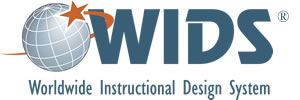- 21 Aug 2023
- 1 Minute to read
- Print
- DarkLight
- PDF
Competencies
- Updated on 21 Aug 2023
- 1 Minute to read
- Print
- DarkLight
- PDF
Major skills, knowledge or attitudes that are measurable and observable; field or discipline specific outcomes addressed at the learning plan (lesson) level.
Samples: Use active listening skills; write a narrative, adjust automotive brakes; prepare an income statement; analyze costs that affect food service; solve quadratic equations; examine the impact of WWII on the family.Checklist |
|
Competencies provide an organizing framework for planning and implementing a learning experience. They are the intended outcomes of learning experiences. Since they describe what learners should to be able to do, they must be stated in observable, measurable terms.
Competencies:
- Determine what content you will teach
- Tell what you want your learners to do with what they know at the end of the learning experience
- Drive a course. Teachers design assignments and assessments around competencies.
Competency Domains
Benjamin Bloom identified three domains of learning: cognitive, psychomotor, and affective. They are referred to as Bloom’s Taxonomy. Cognitive: Focuses on thinking or knowledge. Psychomotor: Focuses on doing or performing. Affective: Focuses on the development of attitudes and interests. Competencies can be written in any of the domains.
Cognitive Domain
Performance statements in the cognitive domain can be placed into one of six levels. Because the definition of a competency implies the application of knowledge, typically they are written at the APPLYING level or above on Bloom’s Taxonomy. (That means they are not written at either the Remembering or Understanding level.) The Verb Library WIDS allows you to search the library by domain and level.
Teachers develop assignments, or learning activities, so students can learn the competency. They also design assessments that assess them. Often a competency map can be drawn that looks something like this.
COMPETENCY | ASSIGNMENTS | ASSESSMENT |
Demonstrate asepsis technique |
|
|
Write a proposal |
|
|
Examine current trends in math and science |
|
|

